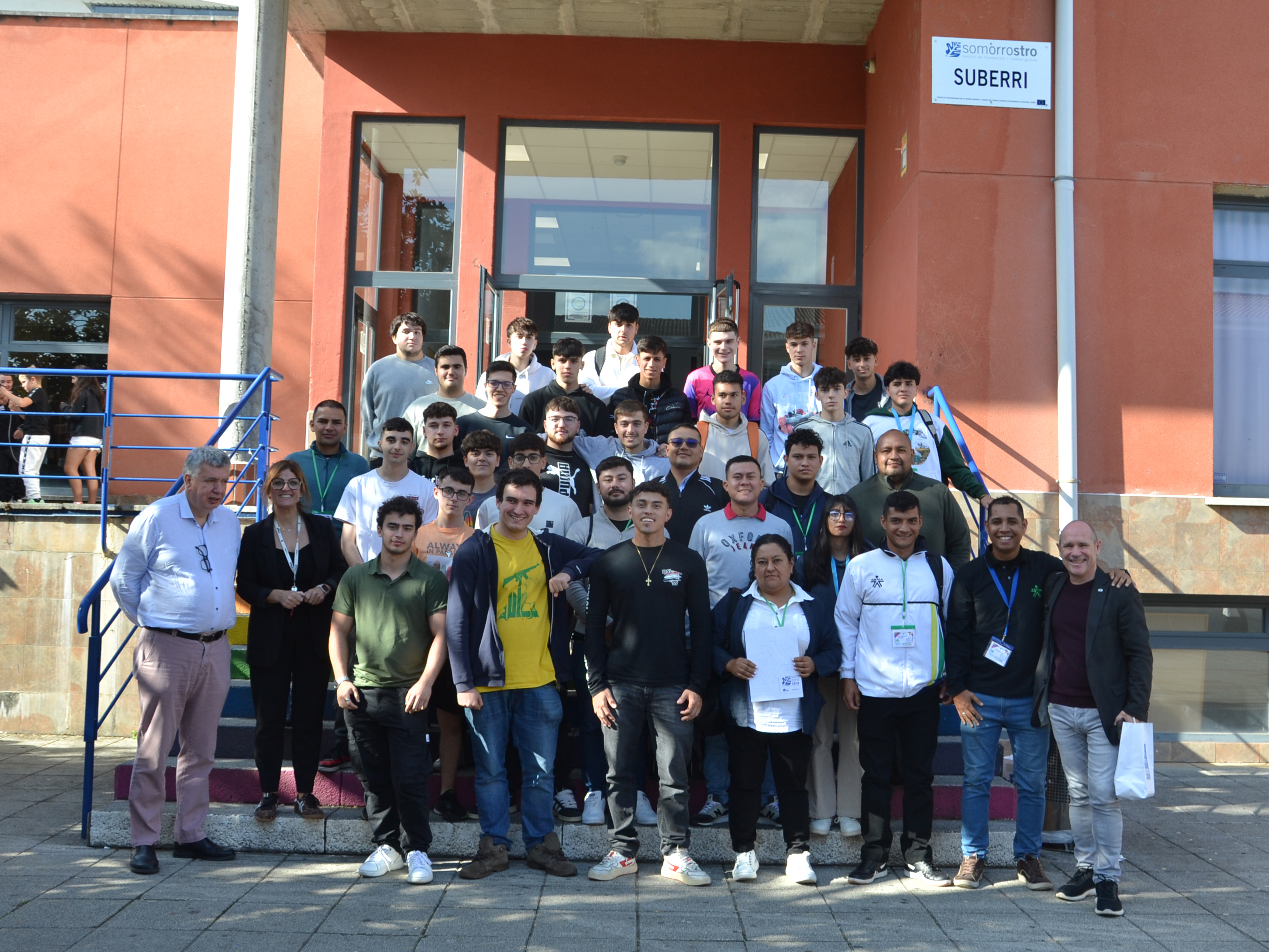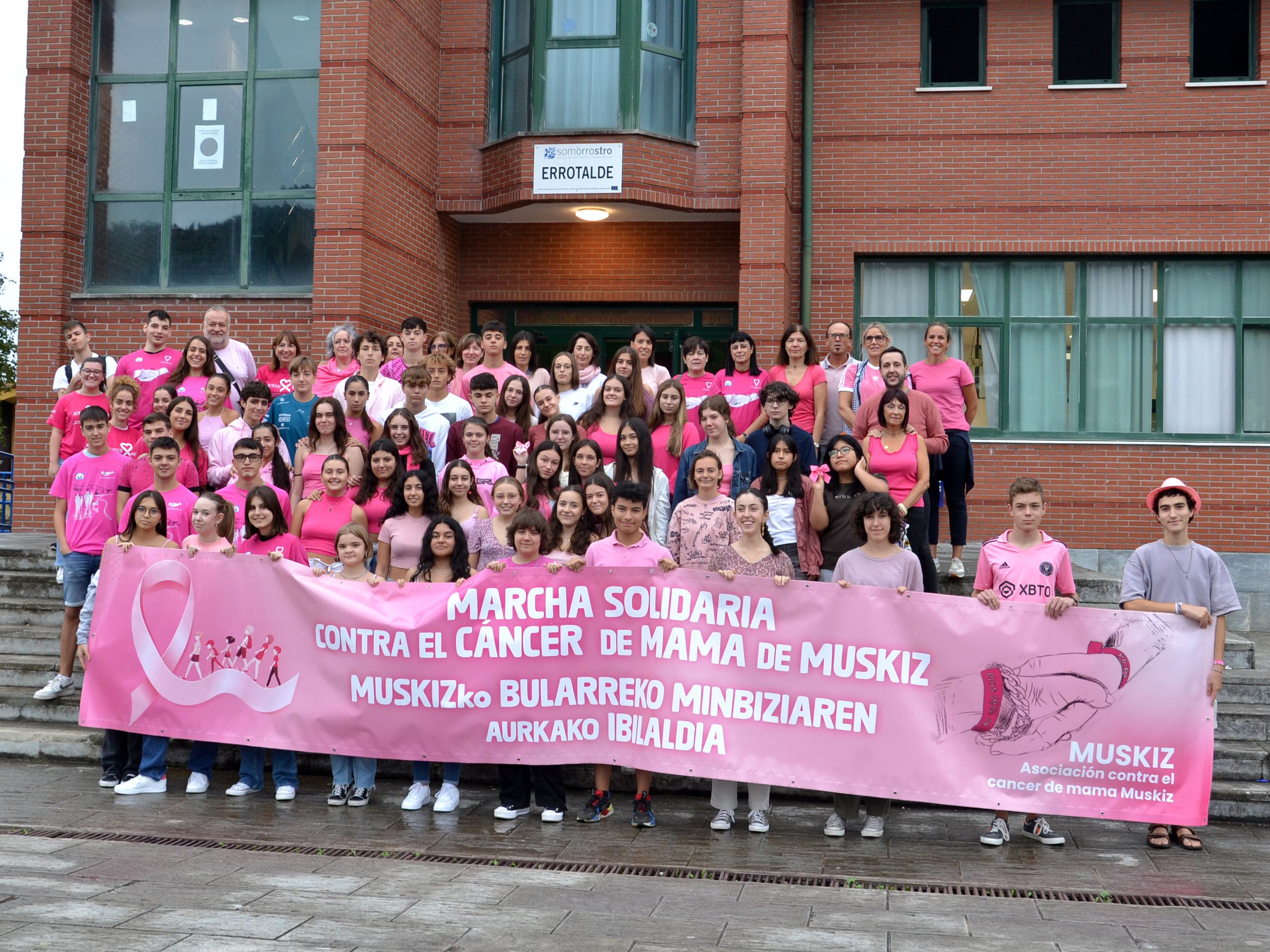Somorrostro Training Center is once again at the forefront of educational innovation with its participation in the state project FC2TEACH (HELEC 2), an initiative of the Ministry of Education, Vocational Training and Sports focused on the production and use of green hydrogen. This second phase of the HELEC project is led at the center by Professor Sendoa Flórez, who is passionate about clean energy and applied training.
“Last year we took the first steps with the assembly of the electrifier and the solar photovoltaic installation that allows us to generate green energy,” Sendoa tells us. “Thanks to this energy, we were able to separate the water molecules into oxygen and hydrogen, which we stored in a tank. But that was just the beginning.”
Now, the second phase of the project focuses on putting the hydrogen produced to use by connecting it to fuel cells capable of transforming it back into electricity. “Our goal is to bring these technologies into the classroom,” he explains. “We want students to understand the whole cycle: from electrolysis to the actual application of hydrogen as an energy vector.”
Sendoa explains enthusiastically what this means: “An energy vector is something that stores energy, like a battery. You can have hydrogen in the form of a gas and then use it to generate electricity, produce heat in a boiler, or even to drive a car.”
The project is currently in the fuel cell selection phase, but the ideas keep coming: “We could, for example, create a hydrogen-powered wifi network or an electrical backup system for a server in the event of a power outage,” he proposes. “It won’t be a continuous-use system, but it will be powerful enough to power small educational applications.”
In addition, materials are being prepared such as the so-called “hydrosticks,” small pens that store hydrogen and can be used with mini fuel cells to, for example, charge a cell phone. “The idea is to show students practical and accessible applications of this technology”.
But beyond the devices, the project has a clear educational vocation. “We are going to develop several didactic challenges,” he explains. “One focused on hydrogen generation and the other on its storage and use with fuel cells”. These challenges will be integrated mainly in the Renewable Energies cycle, although they can also be worked on by students of Electricity and Electronics, both intermediate and higher.
As part of his own professional development, Sendoa is linking this project to his Master’s thesis, with which he seeks to introduce thermodynamics in a more structured way in vocational training. “VET is very much related to thermodynamics, but it is not usually taught as such. I would like to change that. There are so many applications: from combustion engines to plumbing and heating.”
The role of hydrogen in the energy future
Beyond the classroom, Sendoa reflects on the role of hydrogen in the global energy transition. “In the field of electric power, hydrogen will play a key role as a storage system for renewable energies,” he says. “When there is surplus production, instead of shutting down wind turbines or solar panels, hydrogen can be generated and used when there is greater demand.”
Another field of application is the production of synthetic fuels, a cleaner alternative to petroleum derivatives. “Today refineries obtain hydrogen from methane, which generates a lot of CO₂,” he explains. “But if we can produce hydrogen without emissions, we can make synthetic fuels in a much cleaner way.”
In his opinion, the electric car will not be the only solution for sustainable mobility. “I think the future will be more in synthetic fuels,” he asserts. “If we want to stop dumping CO₂ into the atmosphere, hydrogen has to be a fundamental part of the process.”
Vocational training for a more sustainable world
With this new project, the Somorrostro center reaffirms its commitment to vocational training connected to the challenges of the present and the future. “As in all innovation projects, research has to end up in the classroom,” concludes Sendoa. Thanks to projects such as FC2TEACH, vocational training students not only learn about renewable energies, but also take an active part in the energy transition.
















